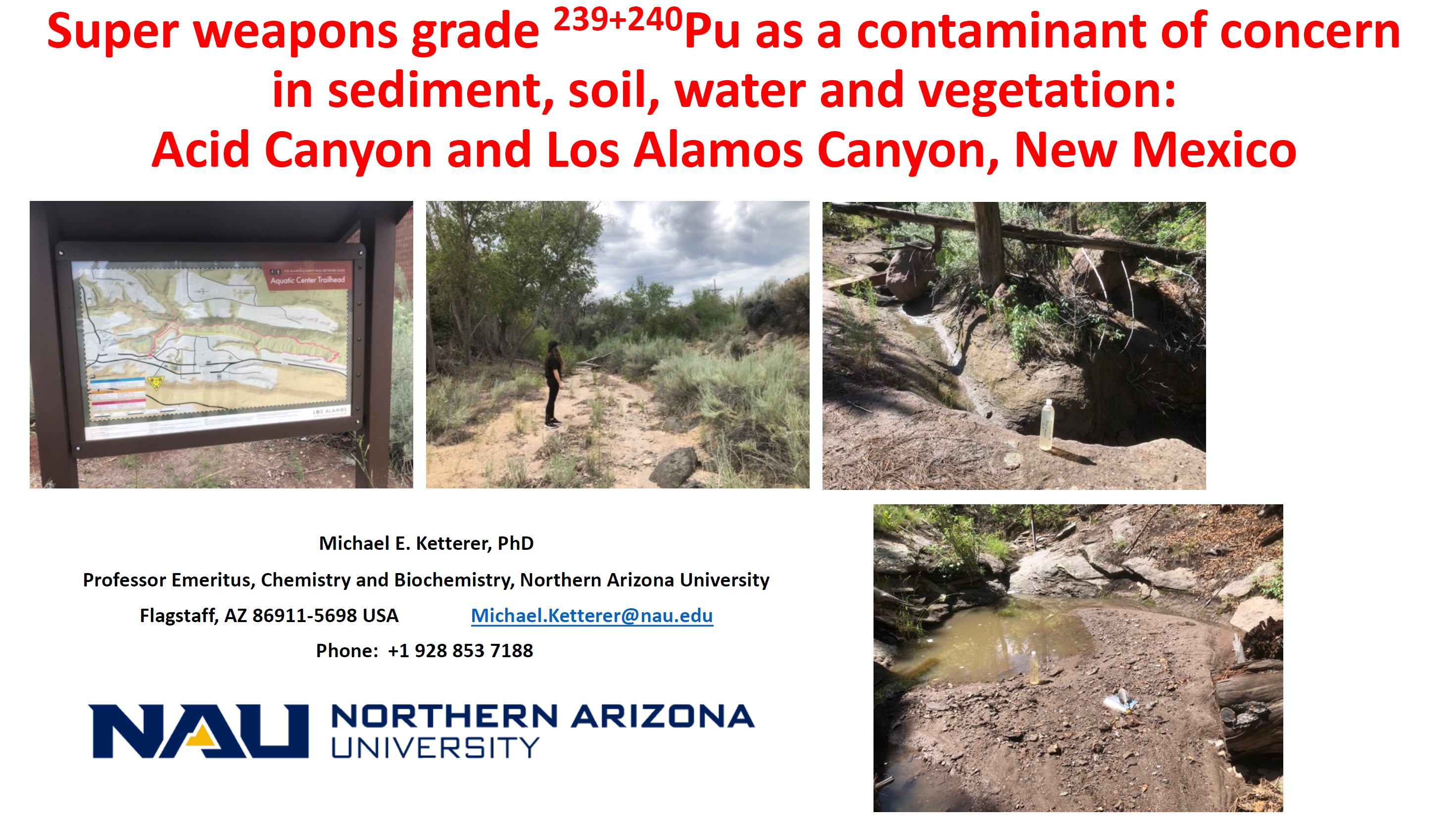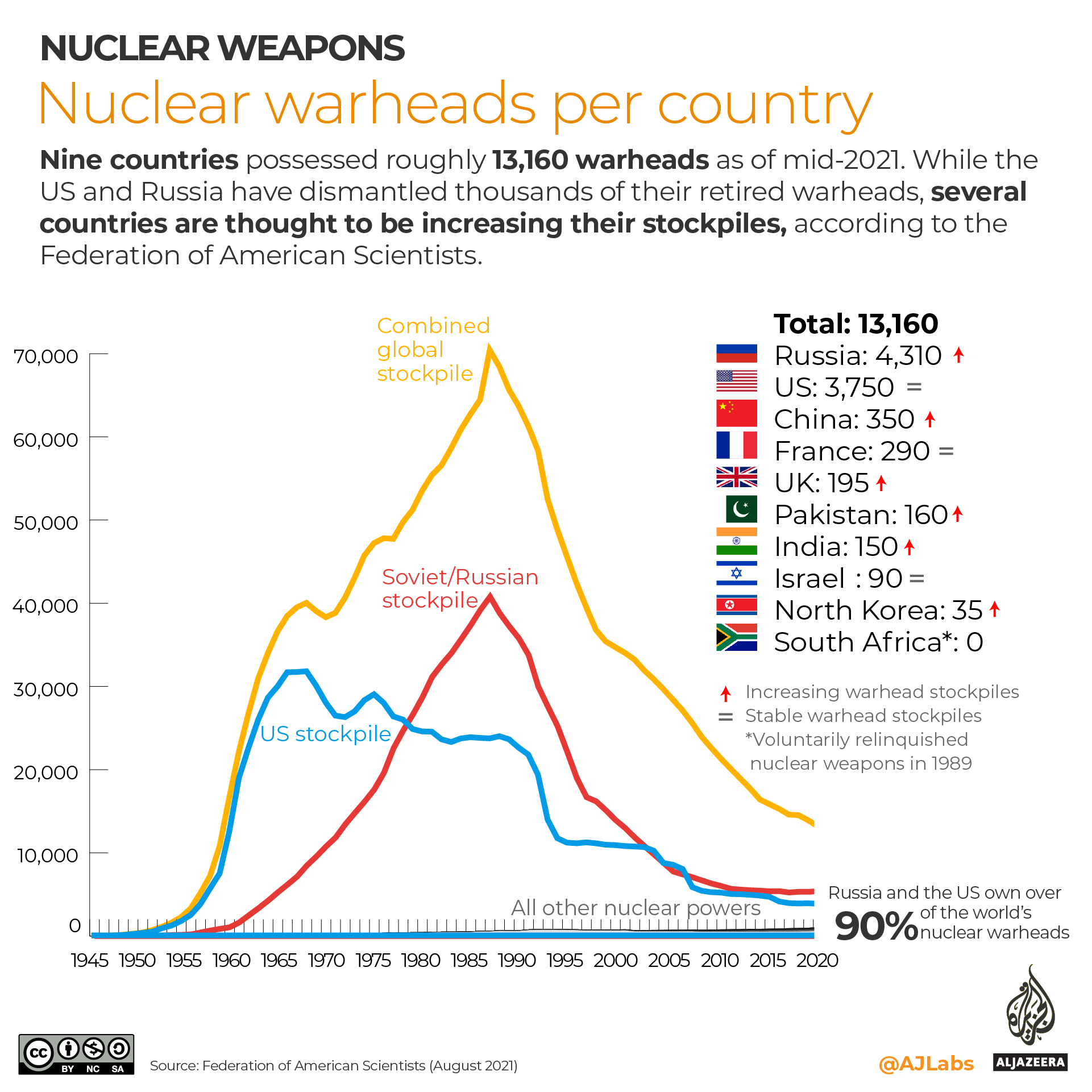QUOTE OF THE WEEK
Nothing Found
It seems we can’t find what you’re looking for. Perhaps searching can help.
LANL’s Central Mission: Los Alamos Lab officials have recently claimed that LANL has moved away from primarily nuclear weapons to “national security”, but what truly remains as the Labs central mission? Here’s the answer from one of its own documents:
LANL’s “Central Mission”- Presented at: RPI Nuclear Data 2011 Symposium for Criticality Safety and Reactor Applications (PDF) 4/27/11
Banner displaying “Nuclear Weapons Are Now Illegal” at the entrance in front of the Los Alamos National Lab to celebrate the Entry Into Force of the Nuclear Weapon Ban Treaty on January 22, 2021
Nothing Found
It seems we can’t find what you’re looking for. Perhaps searching can help.
Follow the Money!
Map of “Nuclear New Mexico”
In 1985, US President Ronald Reagan and Russian President Mikhail Gorbachev declared that “a nuclear war cannot be won and must never be fought.”

Waste Lands: America’s Forgotten Nuclear Legacy
The Wall St. Journal has compiled a searchable database of contaminated sites across the US. (view)
Related WSJ report: https://www.wsj.com
New & Updated
Nothing Found
It seems we can’t find what you’re looking for. Perhaps searching can help.
High Detections of Plutonium in Los Alamos’ Acid Canyon
Nothing Found
It seems we can’t find what you’re looking for. Perhaps searching can help.
Al Jazeera Infographic: The World Nuclear Club
While 32 countries generate atomic energy, nine have nuclear weapons and seven countries have both.
By Mohammed Haddad and Hanna Duggal Al Jazeera aljazeera.com
Nuclear warheads per country
Nine countries possessed roughly 13,150 warheads as of August 2021, according to the Federation of American Scientists. More than 90 percent are owned by Russia and the US.
At the peak in 1986, the two rivals had nearly 65,000 nuclear warheads between them, making the nuclear arms race one of the most threatening events of the Cold War. While Russia and the US have dismantled thousands of warheads, several countries are thought to be increasing their stockpiles, most notably China.
According to the Pentagon’s 2021 annual report (pdf), China’s nuclear warhead stockpile is expected to more than triple and reach at least 1,000 by 2030.
The only country to voluntarily relinquish nuclear weapons is South Africa. In 1989, the government halted its nuclear weapons programme and in 1990 began dismantling its six nuclear weapons. Two years later, South Africa joined the Treaty on the Non-Proliferation of Nuclear Weapons (NPT) as a non-nuclear country.
With the 26th UN Climate Change Conference over, nations are making plans to move to green energy in a bid to tackle global warming.
But nuclear energy is a particular sticking point. While it is the largest source of low-carbon electricity in OECD countries, some nations have spoken out against the categorisation of nuclear energy as climate-friendly.
Across the globe, 34 countries harness the power of splitting atoms for generating electricity or for nuclear weapons. (Al Jazeera)
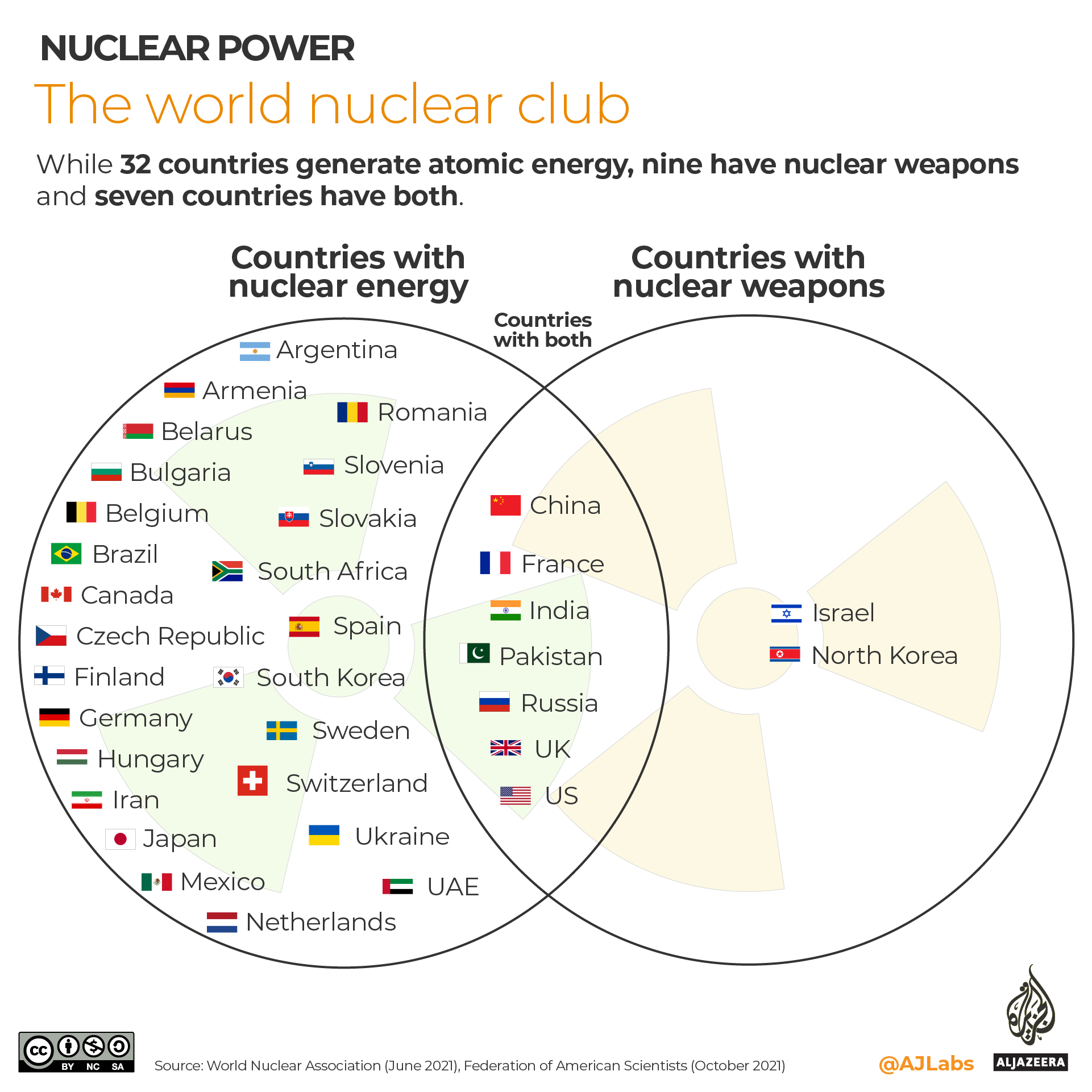
Global nuclear energy
Nuclear energy provides roughly 10 percent of the world’s electricity. Of the 32 countries with nuclear power reactors, more than half (18) are in Europe. France has the world’s highest proportion of its electricity – at 71 percent – coming from atomic power.
Up until 2011, Japan was generating some 30 percent of its electricity from nuclear reactors; however, following the Fukushima disaster, all nuclear power plants were suspended for safety inspections. As of 2020, just 5 percent of Japan’s electricity came from nuclear power, according to the World Nuclear Association.
Nuclear power constitutes some 20 percent of the United States’ electricity. About 60 percent of the country’s energy comes from fossil fuels, including coal, natural gas and petroleum, with the remaining 20 percent coming from renewable sources – wind, hydro and solar.
Flooding and Nuclear Waste Eat Away at a Tribe’s Ancestral Home
The federal government allowed a stockpile of spent fuel on a Minnesota reservation to balloon even as a dam project whittled down the amount of livable land.
Interviews and documents obtained by The New York Times show how the state of Minnesota and the federal government ignored warnings about potential dangers posed to the tribe as they kept allowing the amount of waste stored on the reservation to expand and did little to address annual flooding that harms the tribe’s economy.
“I mean, this is a classic environmental justice fact pattern,” said Heather Sibbison, chair of Dentons Native American law and policy practice at Dentons Law Firm. “We have a minority community, a disadvantaged community, bearing the brunt of two huge infrastructure projects that serve other people.”
By Mark Walker NEW YORK TIMES nytimes.com
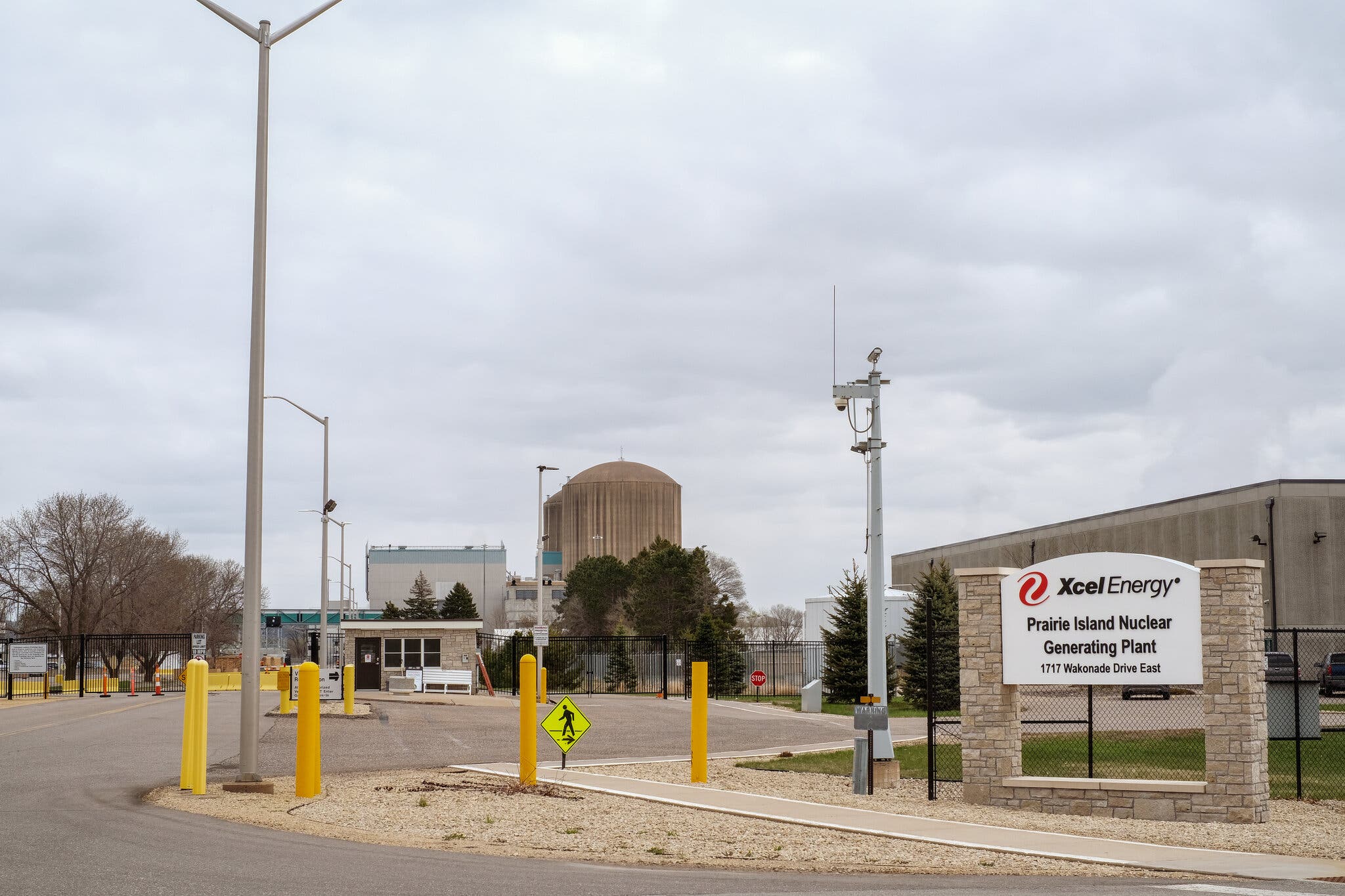
For decades, chronic flooding and nuclear waste have encroached on the ancestral lands in southeastern Minnesota that the Prairie Island Indian Community calls home, whittling them to about a third of their original size.
Two years after the tribe received federal recognition in 1936, the Army Corps of Engineers installed a lock-and-dam system just to the south along the Mississippi River. It repeatedly flooded the tribe’s land, including burial mounds, leaving members with only 300 livable acres.
Decades later, a stockpile of nuclear waste from a power plant next to the reservation, which the federal government reneged on a promise to remove in the 1990s, has tripled in size. It comes within 600 yards of some residents’ homes.
With no room to develop more housing on the reservation, more than 150 tribal members who are eager to live in their ancestral home are on a waiting list.
Cody Whitebear, 33, who serves as the tribe’s federal government relations specialist, is among those waiting. He hopes he can inherit his grandmother’s house, which is on the road closest to the power plant.
“I never had the opportunity to live on the reservation, be part of the community,” said Mr. Whitebear, who began connecting with his heritage after the birth of his son, Cayden. “In my mid-20s I had the desire to learn about my people and who I am and who we are.”
Proposed plutonium shipments concern New Mexico lawmakers
“The agency has said little overall about its plans, despite the potential hazards, said Cindy Weehler, who co-chairs the watchdog group 285 ALL.”
By Scott Wyland [email protected] Santa Fe New Mexican santafenewmexican.com

A panel of state lawmakers expressed concerns Friday about plans to truck plutonium shipments through New Mexico, including Santa Fe’s southern edge, and will send letters to state and federal officials asking for more information on the transports.
Two opponents of the shipments — a Santa Fe County commissioner and a local activist — presented the Department of Energy’s basic plan to the Legislature’s Radioactive and Hazardous Materials Committee, provoking a mixture of surprise and curiosity from members.
Several lawmakers agreed transporting plutonium is more hazardous because it is far more radioactive than the transuranic waste — contaminated gloves, equipment, clothing, soil and other materials — that Los Alamos National Laboratory now ships to the Waste Isolation Pilot Plant, an underground disposal site near Carlsbad.
Nuclear Power Is COP26’s Quiet Controversy
“We have to get everything done in the next 25 years…The idea that you’re going to scale up a technology you don’t even have yet, and it’s going to be commercially viable [in that time], just seems to me like la la land.” — Tom Burke, co-founder of climate think tank E3G.
BY ALEJANDRO DE LA GARZA time.com
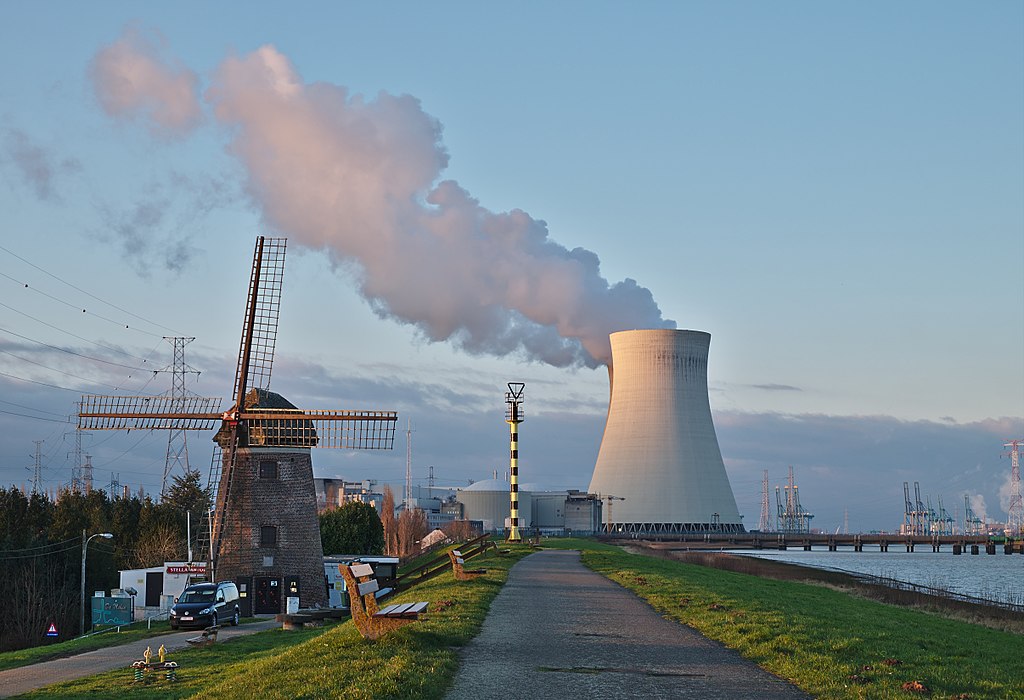
In the midst of the COP26 climate talks yesterday, U.S. and Romanian officials stepped aside for a session in the conference’s Blue Zone, establishing an agreement for U.S. company NuScale to build a new kind of modular nuclear power plant in the southeastern European country. The company’s plants—designed to be quickly scaled up or down based on need—are intended to be quicker and cheaper to build than the traditional kind, with some considering them to be a promising alternative for countries seeking to wean themselves off fossil fuels.
NuScale CEO John Hopkins sees the agreement as part of a broader recognition that nuclear power has a big role to play as the world decarbonizes. “I’ve seen a significant shift here,” Hopkins said, speaking to TIME from Glasgow yesterday. “It used to be the only thing really discussed was renewables, but I think people are starting to be a little more pragmatic and understand that nuclear needs to be in the mix.”
But others at COP26 aren’t convinced that NuScale’s small reactors can help avoid climate catastrophe. Some point to the fact that NuScale has yet to build a single commercial plant as evidence that the company is already too late to the party.
US Government Works to ‘Cocoon’ Old Nuclear Reactors
Costs to clean up a massive nuclear weapons complex in Washington state are usually expressed in the hundreds of billions of dollars and involve decades of work.
Hanford watchdogs generally agree with this process, said Tom Carpenter, director of the Seattle-based watchdog group Hanford Challenge.
“Nobody is raising any concerns about cocooning,” Carpenter said. “We’re all worried about the tank waste that needs immediate and urgent attention.” The bigger question is whether future generations will be willing to pay the massive costs of Hanford cleanup, he said.
By NICHOLAS K. GERANIOS Associated Press November 4, 2021 abcnews.go.com
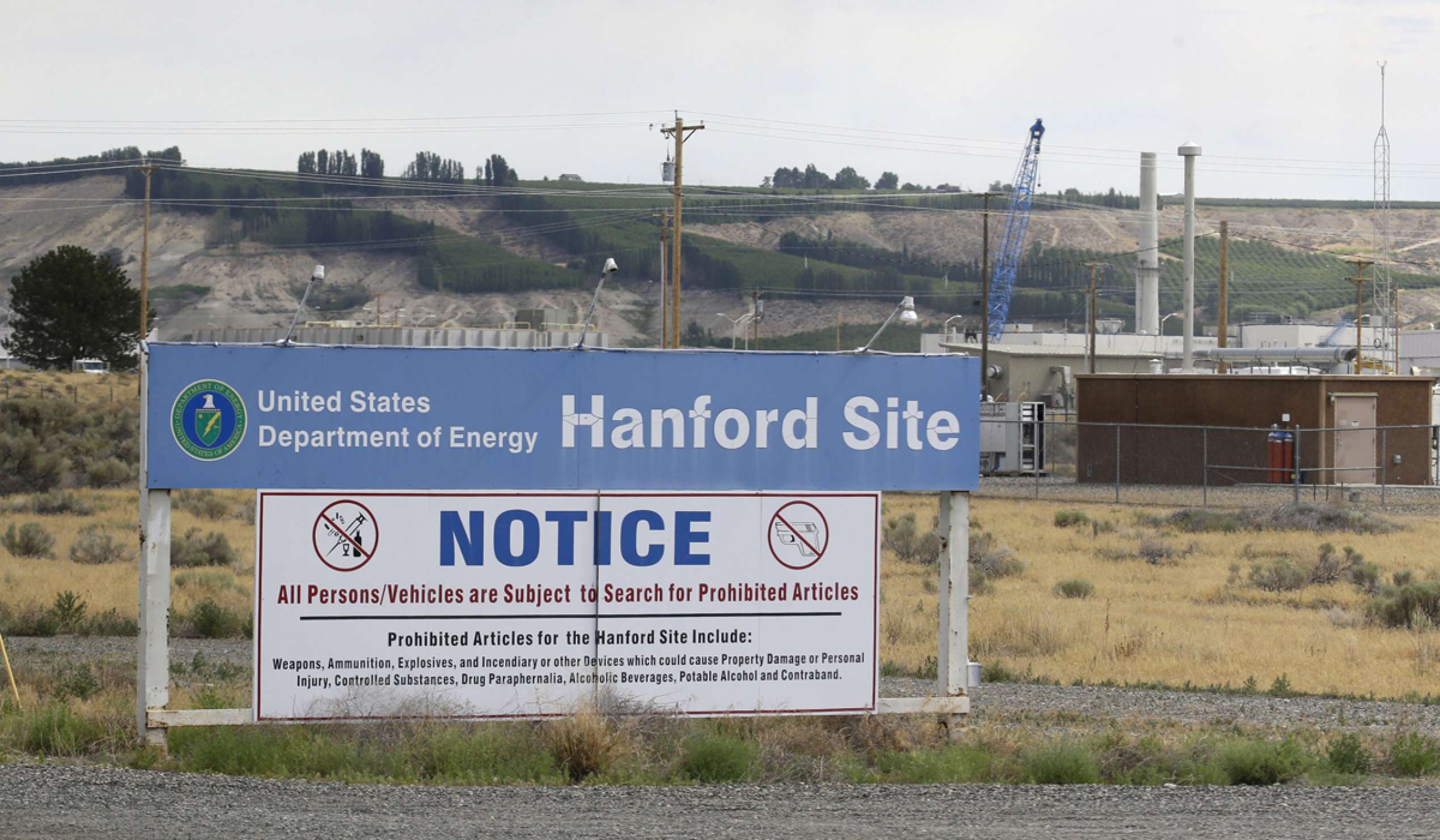
SPOKANE, Wash. — Costs to clean up a massive nuclear weapons complex in Washington state are usually expressed in the hundreds of billions of dollars and involve decades of work.
But one project on the Hanford Nuclear Reservation is progressing at a much lower price.
The federal government is moving forward with the “cocooning” of eight plutonium production reactors at Hanford that will place them in a state of long-term storage to allow radiation inside to dissipate over a period of decades, until they can be dismantled and buried.
“It’s relatively non-expensive,” Mark French, a manager for the U.S. Department of Energy, said of cocooning. “The cost of trying to dismantle the reactor and demolish the reactor core would be extremely expensive and put workers at risk.”
The federal government built nine nuclear reactors at Hanford to make plutonium for atomic bombs during World War II and the Cold War. The site along the Columbia River contains America’s largest quantity of radioactive waste.
Is it green, or forever toxic? Nuclear rift at climate talks
“Whether we decide to go on with the nuclear energy or not…We will need to find a solution for the management of that nuclear waste” that humankind has already produced.” — Audrey Guillemenet, geologist and spokesperson for one of France’s underground waste repositories.
By ANGELA CHARLTON Associated Press November 4, 2021 apnews.com
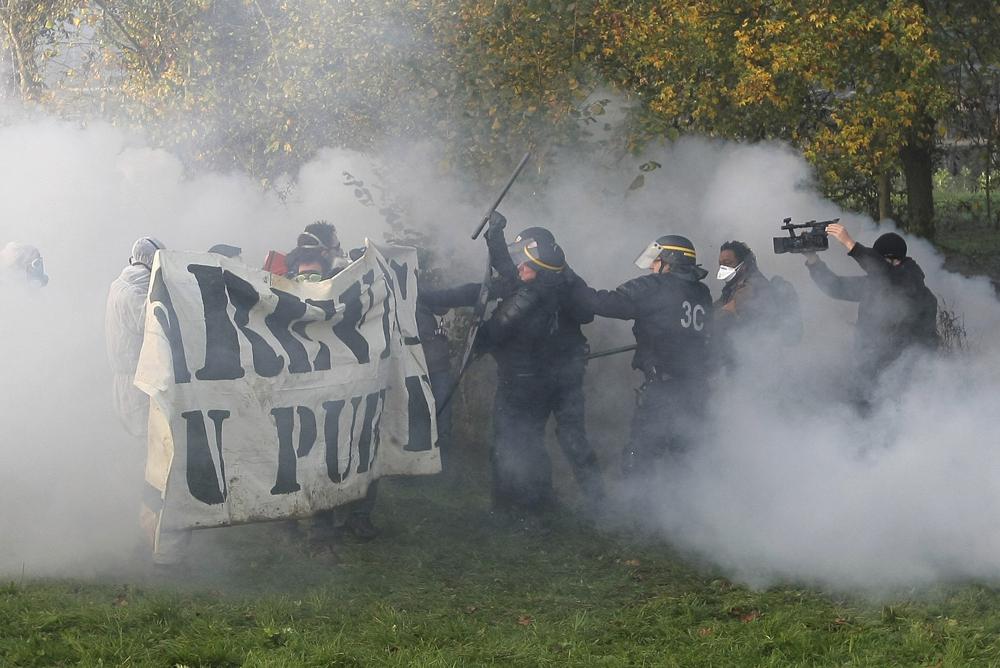
SOULAINES-DHUYS, France (AP) — Deep in a French forest of oaks, birches and pines, a steady stream of trucks carries a silent reminder of nuclear energy’s often invisible cost: canisters of radioactive waste, heading into storage for the next 300 years.
As negotiators plot out how to fuel the world while also reducing carbon emissions at climate talks in Scotland, nuclear power is a central sticking point. Critics decry its mammoth price tag, the disproportionate damage caused by nuclear accidents, and radioactive leftovers that remain deadly for thousands of years.
But increasingly vocal and powerful proponents — some climate scientists and environmental experts among them — argue that nuclear power is the world’s best hope of keeping climate change under control, noting that it emits so few planet-damaging emissions and is safer on average than nearly any other energy source. Nuclear accidents are scary but exceedingly rare — while pollution from coal and other fossil fuels causes death and illness every day, scientists say.
U.S. Discloses Nuclear Stockpile Numbers
The Biden administration has publicly released the total number of nuclear weapons in the U.S. stockpile, a sharp reversal of the previous administration’s refusal to do so for the past three years.
By: Shannon Bugos ARMS CONTROL ASSOCIATION • armscontrol.org
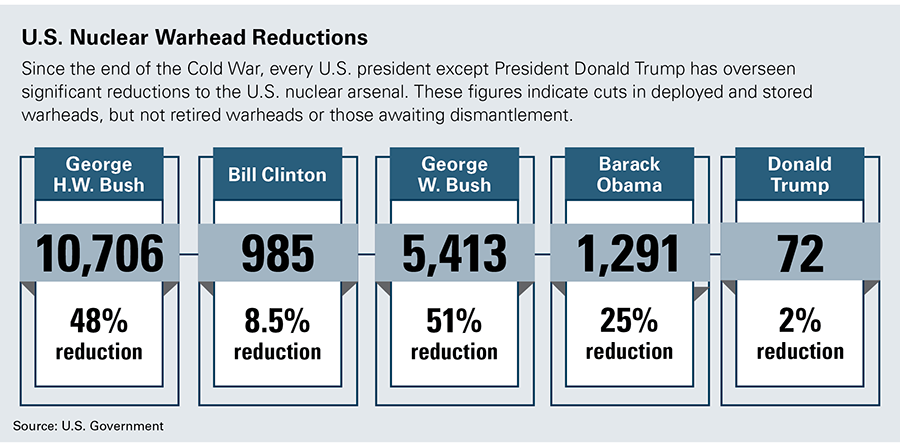
“Today, as an act of good faith and a tangible, public demonstration of the U.S. commitment to transparency, we will present data which documents our own record of continued progress toward the achievement of the goals” of the 1968 nuclear Nonproliferation Treaty (NPT), said Bonnie Jenkins, undersecretary of state for arms control and international security, on Oct. 5.
The U.S. stockpile of nuclear warheads was at 3,750 as of September 2020, according to the administration document. This number captures active and inactive warheads, but not the roughly 2,000 retired warheads awaiting dismantlement. The document lists stockpile numbers going back to 1962, including the warhead numbers from the years when the Trump administration refused to declassify the information.
Nothing Found
It seems we can’t find what you’re looking for. Perhaps searching can help.
CRITICAL EVENTS
Nothing Found
It seems we can’t find what you’re looking for. Perhaps searching can help.
Nothing Found
It seems we can’t find what you’re looking for. Perhaps searching can help.
New Nuclear Media: Art, Films, Books & More
Nothing Found
It seems we can’t find what you’re looking for. Perhaps searching can help.













